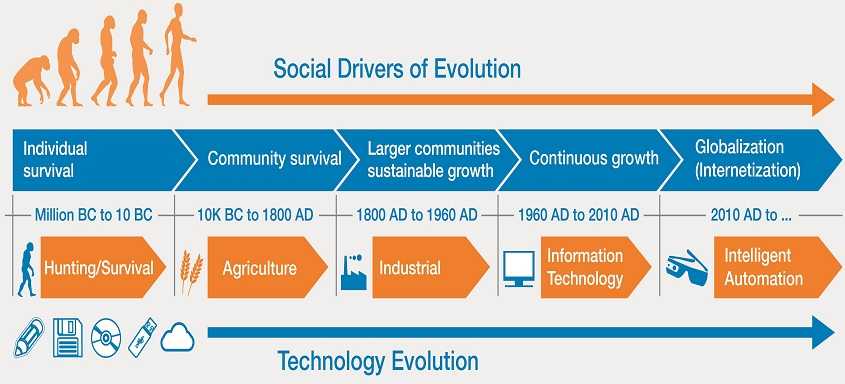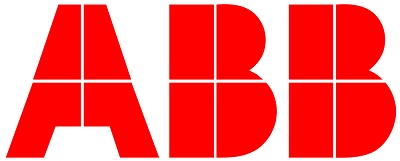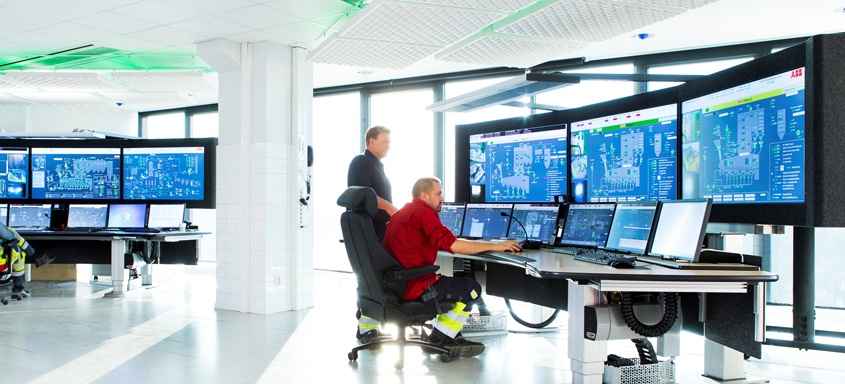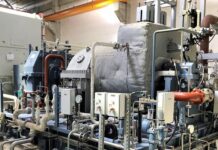Emergent Big Data technologies are helping us adopt new business models and find innovative opportunities for revenues and value in new markets that enable the connection of people, businesses and things.
Collectively, these efforts represent significant growth opportunities n technology and services, and the development of promising new bridges between the real and the virtual world that will integrate real-life objects, sensors and human activities.
The Big Data effect
In the automation domain, Big Data usually does not simply mean collecting raw data. In this sphere, with too little data one can’t make trustworthy conclusions, but with too much data, we may end up identifying relationships that aren’t real. Finding the right balance is important, and enables the appropriate use of Big Data for automation needs. Delivering the right amount of data for users while allowing for an equal dose of experience and intuition is the hallmark of the Symphony® Plus line of automation systems. The above vision helps us to fuse concepts and technical components together, creating a seamless smart network of identifiable objects (both physical and virtual) that communicate with one another. In the Symphony Plus ecosystem, smart devices direct their payloads (messages) by adapting to their current environment; exhibit self-awareness and self configuration; and will eventually allow for self-maintenance and self-repair, and even their own disposal. They proactively adapt to changes and deal effectively with unforeseen circumstances.
The above vision helps us to fuse concepts and technical components together, creating a seamless smart network of identifiable objects (both physical and virtual) that communicate with one another. In the Symphony Plus ecosystem, smart devices direct their payloads (messages) by adapting to their current environment; exhibit self-awareness and self configuration; and will eventually allow for self-maintenance and self-repair, and even their own disposal. They proactively adapt to changes and deal effectively with unforeseen circumstances.
It is true that current technological advances have brought these visions a step closer to reality. Associated technological breakthroughs and convergences in areas such as wireless, miniaturization, batteries, networking, etc., are mature and cost-effective enough to enable objects to become connected and hence usher in this new era of coordinated, connected devices, people and services.
Small mobile transceivers are already finding their way into smart devices and enabling new forms of communication, not only between humans, but between humans and objects and between the objects themselves. These advances are redefining the industrial sector and driving it to a whole new level of customer focus, stakeholder engagement and service satisfaction. The opportunities are huge, and so are the challenges: just about every single industry is preparing to leverage these innovations in a meaningful way today.
Within the automation domain, the issues of standardized data formats are still nascent and emerging. In addition, there is a significant need in this domain, compared with others such as commodity computing, to know the business more deeply and holistically in order to utilize the advantages afforded by Big Data. In addition, the need to work with long-standing systems means data is often inconsistent throughout the system, and has been designed in an evolutionary form over years, or even decades. Hence, the main challenge in leveraging Big Data for automation lies in making the data standardized, clean and consistent before applying various modeling and optimization techniques. Most systems based on Big Data systems tend to leverage techniques such as machine learning for prediction and strategy and try to form a clear, concise, and compact view of the future by utilizing trends of past data. Most stakeholders wish for results in aggregate, as well as detailed formats to optimize resources and save costs.
The introduction of mobile devices and their mutual interactions only adds to this deluge of data and increases the need to integrate it into online, real-time analysis. As a result the need for faster real-time analytics is increasing exponentially within the automation sector. This implies understanding both linear The power of data How global technology trends are revolutionizing the power generation industry and nonlinear relationships between different parameters to get the best possible insights about leading indicators, and so analyzing interdependencies and complex relationships between these indicators using scalable and powerful visualization capabilities becomes critical. Our systems must interweave the strengths and limitations of a diverse set of popular learning algorithms to suggestively help our engineers take better decisions through project execution. For example, while time series clustering techniques helps us with trending functions for real-time extrapolations, techniques such as Neural networks, Bayesian networks and Markov models help us get deeper insights from well-defined data stores (data lake).
But where does one begin? There are many ways to consider where to start this journey. The first is to understand the fundamentals of how these solutions are designed.

The Symphony Plus approach to software design
Design-driven innovation is the radical innovation of meaning. Radical innovation of meaning is how quickly the technology is capable of change. User-driven, incremental change is simply not disruptive enough for automation organizations in the face of rapid technological changes such as cloud, Big Data and the Industrial Internet of Things. The convergence of these technologies enables solution providers to be disruptive while keeping the bigger picture in sight, so users like EPCs, OEMs and utility customers can rapidly see the forest through the trees.
Symphony Plus is a well-designed software system that exhibits a high degree of cohesion (or interaction within its components) and low coupling between its components.The Symphony Plus software design approach allows the interactive transformation of a specification into a structure suitable for implementation.
The two major stages of software design are architectural and detailed design. In the architectural design stage, the system is broken down into a unit, module or component based systems model. Most software architectural design grows out of Process-Oriented Design and Data-Oriented Design techniques. While Process-Oriented Design techniques focus on functional decomposition and structural software architecture, Data-Oriented Design techniques focus on data structure and flow. However, automation processes often involve specific process and data flows.
To effectively service their needs, automation customers need the right data in the right form, so Symphony Plus adopts a responsibility-based design approach, blending process and data-oriented techniques into responsibility based clusters, to evolve components that become reusable, stable artifacts that can be reused with little or no modification.
Design and test metrics
Current approaches to measuring software design and testing quality in large-scale software systems rely heavily on metrics. Established metrics calculate burn down rates based on bug types, classes, design issues, severity and similar classifications.
However, these classifications do not focus on whether the software system performs with improved stability over time, or how the systems or subsystems change impact design and testing rationalization. While the importance of systems rationalization is tantamount, we cannot underestimate the importance of scalability and agility to support overall design and testing. From a scalability perspective, we have to be able to create or evolve systems that are capable of acquiring or divesting other systems seamlessly.
Symphony Plus systems are capable of scaling up and down, whatever the organization or the customer requires. This agility plays a role in just being “good enough” and flexible to not just standard, regular needs, but also evolving organizational needs. The Symphony Plus system adapts, but only by the appropriate amount for timeliness and completeness of the solution needs.
Soft marshalling
Most DCS engineering systems are designed to work in a sequential mode, lock-step in nature, one step after the other. While these outcomes are due to engineering systems that have evolved from legacy versions, it poses a major problem to current demands in the automation field, where project schedules are increasingly more aggressive. The inflow of needed information like I/O list and nest loading do not necessarily happen at the start of the project as required, leading to erroneous last minute project execution and COPQ (cost of poor quality) during commissioning. T he notion that the I/O list is subject to change until the plant stabilizes after commissioning, adds an additional layer of complexity.
ABB’s technology pioneers are working towards making the workflow more flexible and hence information changes at any stage of the project would have less impact with nearzero errors. Soft marshalling technology is adapted in which the relationship between field devices and controllers is soft configured, and hence the complexity of I/O marshalling cabinets and complex wiring to I/O cards are negated. The field devices are connected to “Ethernet IP” enabled I/O modules, from where the signals are bussed to the control network/controllers. T he major advantage here is ABB can work with third-party Ethernet IP devices in existing installations benefiting customers with ABB’s flagship Symphony Plus controllers at a r educed project cost.
Case study: digitalizing waste
A strategic business partner of ABB is a pioneer in generating energy from waste. As an engineering, procurement and construction (EPC) contractor, this partner as well as ABB can extend its services to end-customers utilizing emerging technologies like digitalization and the Internet of Things, Services and People (IoTSP).In the figure above, a simple overview shows the leveraging of our partnership to provide services and solutions for customers. Over the years, ABB has executed three key projects for this particular business partner, converting nonhazardous and municipal waste into sustainable energy solutions. ABB’s digitalization solutions enable the customer to collectively monitor and oversee digital data from across three plants in terms of project execution, plant monitoring and optimization, asset health, network planning and adverse event management, service performance and availability and proactive maintenance.
Data collection is done utilizing different types of sources like sensors, machines, asset database, historian server,operation and engineering servers, server logs, audit trial logs and network logs. The key challenge here is that the data types vary from unstructured to structured and non-standard schema to standard schema.
The collected data is often incomplete, and hence subjected to data preparation for analysis. The usual problem is “missing data for specific period,” while this is handled through auto profiling of information based on the history of the specific parameter. Big data analysis along with process specific algorithms are applied to derive various information from the collected data.
The results are reported periodically and visualized on demand by authorized personal at the end-customer. The results could relate to process, automation system, asset management, improvement opportunities, preventive maintenance, trouble-shooting and enhanced service. Real-time information and conclusive dashboards can support decision making about further optimizing or improving production.
 Srini Ramaswamy has over 25 years of experience in the design and development of large-scale software systems. He has been with ABB for more than 7 years and is currently the Global Software Technology Manager for the R&D in Power Generation business, providing customers with advanced, cost-effective software solutions for the Symphony Plus automation system solutions. Srini looks forward to developing long-term technology solutions that support and enable our commitment to ‘evolution without obsolescence’. Simultaneously, he also works towards introducing new and emerging technological solutions (such as big data, mobile, IoT and Cloud, etc.) to enable our customers extend the lifetime of, and seamlessly transition from, existing solutions deployed in their plants.
Srini Ramaswamy has over 25 years of experience in the design and development of large-scale software systems. He has been with ABB for more than 7 years and is currently the Global Software Technology Manager for the R&D in Power Generation business, providing customers with advanced, cost-effective software solutions for the Symphony Plus automation system solutions. Srini looks forward to developing long-term technology solutions that support and enable our commitment to ‘evolution without obsolescence’. Simultaneously, he also works towards introducing new and emerging technological solutions (such as big data, mobile, IoT and Cloud, etc.) to enable our customers extend the lifetime of, and seamlessly transition from, existing solutions deployed in their plants.
About ABB
ABB is a leading provider of integrated power and automation solutions for conventional and renewable power plants and the water industry. Our portfolio includes integrated electrical and automation systems, instrumentation and service to optimize the performance, reliability and efficiency of plants.
Contact us
ABB
Power Generation
New.abb.com/power-generation
Srini Ramaswamy
Global Software Technology Development Manager
Power Generation
srini.ramaswamy@us.abb.com
Stefania Mascheroni
Global Marketing Communications Manager
Power Generation
Stefania.mascheroni@it.abb.com




































